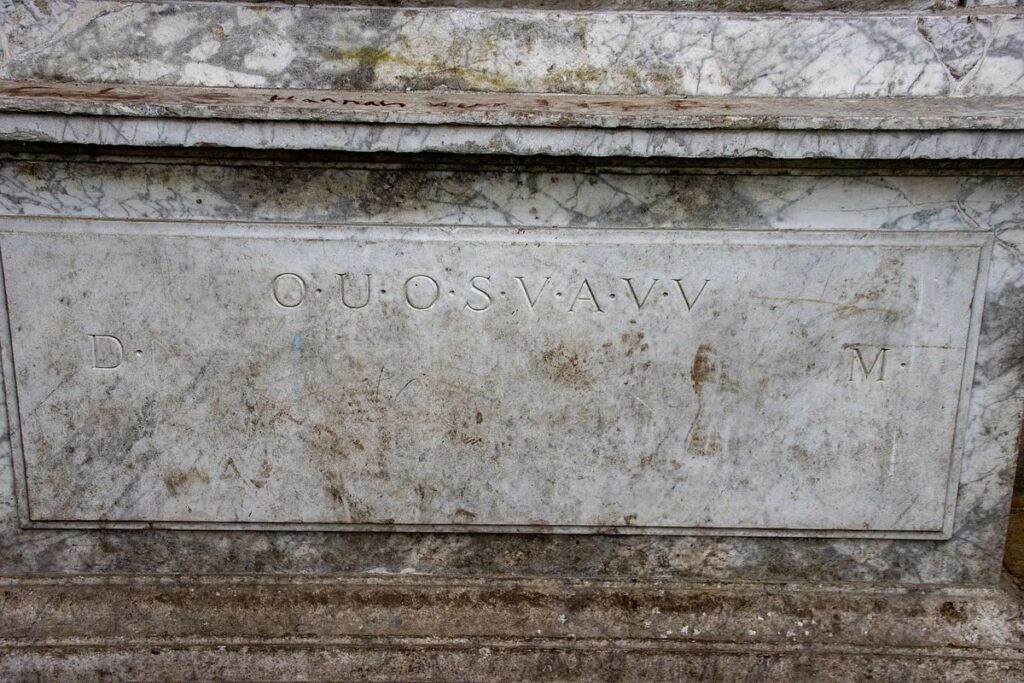The Unsolved Inscription at Shugborough Hall
A Cryptic Code Carved in Stone

In the grounds of Shugborough Hall, Staffordshire, England, stands a mysterious monument that has puzzled scholars and code-breakers for over two and a half centuries. Known as the Shepherd’s Monument, it features a marble relief based on Nicolas Poussin’s painting “The Shepherds of Arcadia,” along with a cryptic inscription of ten letters: DOUOSVAVVM.

The Monument’s Origins
Commissioned by Thomas Anson and funded by his brother, Admiral George Anson, the monument was crafted by Flemish sculptor Peter Scheemakers. Recent research suggests it was constructed between 1749 and 1756, coinciding with the period when the enigmatic Count of St. Germain entered the Anson family’s lives.

Attempts at Decipherment
The inscription has attracted attention from some of history’s greatest minds, including Charles Dickens and Charles Darwin. Various theories have been proposed:
- Margaret, Countess of Lichfield, suggested it was a love message.
- Steve Regimbal interpreted it as a Latin translation of a Biblical verse.
- Keith Massey, a former NSA linguist, proposed it stood for a Latin phrase referencing John 14:6.
- An anonymous American claimed to have decoded it as “Jesus H Defy,” potentially linking it to Templar beliefs.

The Templar Connection
Some believe the monument holds clues to the Holy Grail, connecting it to secret societies like the Priory of Sion and the Knights Templar. The relief’s alterations from Poussin’s original painting, including reversed imagery and added elements, fuel these theories.

A Simple Memorial?
Contrasting the complex theories, some experts favor a simpler explanation. Sheila Lawn, a former Bletchley Park code-breaker, supports the interpretation of the central eight letters as a Latin poem honoring a departed loved one.
The Mystery Continues

Despite numerous attempts to crack the code, the true meaning of the Shepherd’s Monument inscription remains elusive. Whether it’s a profound secret, a private message of love, or something else entirely, this 250-year-old enigma continues to captivate the imagination of visitors and researchers alike.

